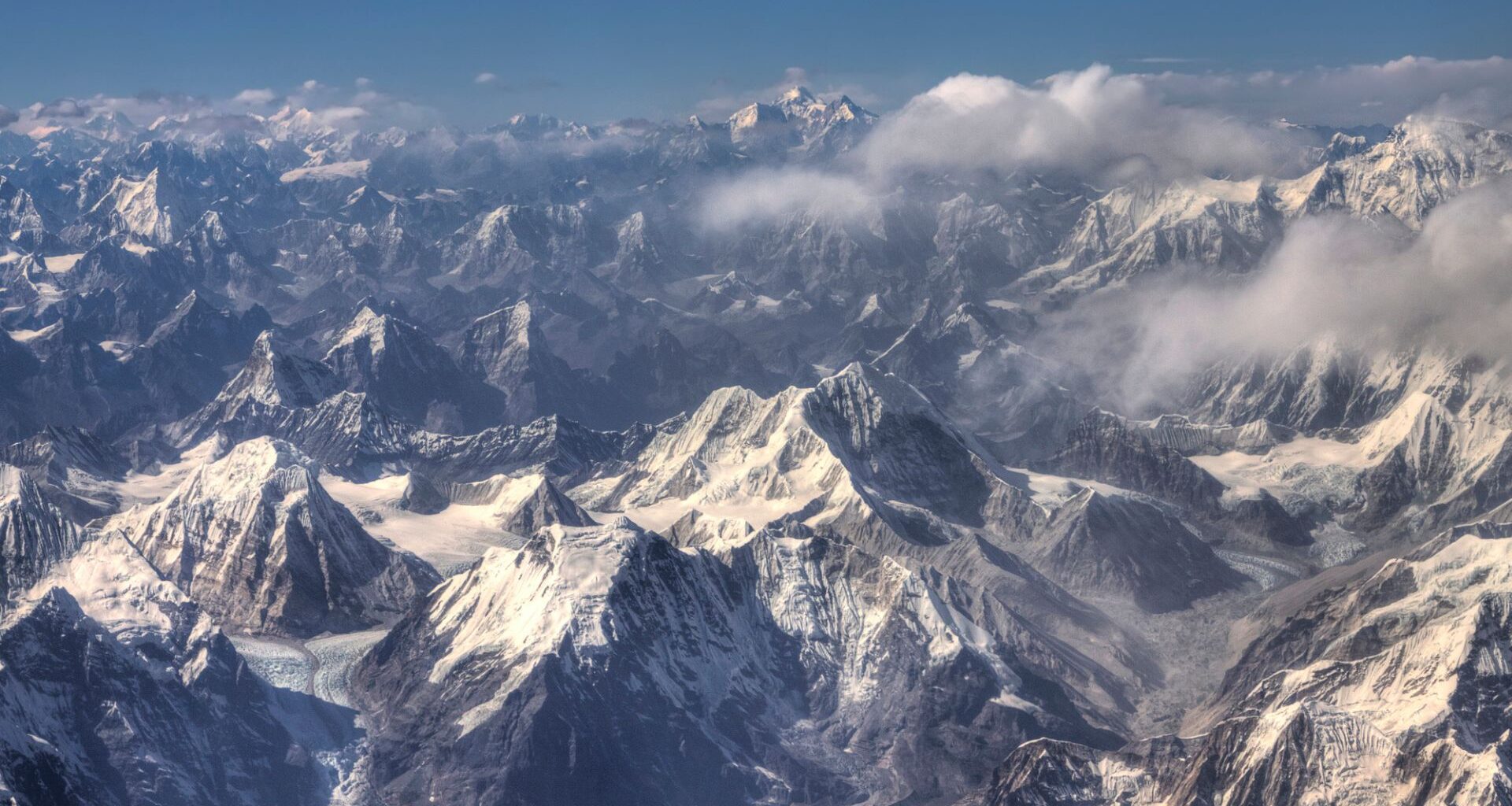Most geologists believe the Himalayas’ immense height results from thickening of the Earth’s crust.
However, a new study suggests the geology beneath the world’s tallest mountain range is much more complex, proposing a novel crust-mantle-crust structure.
To unravel the deep dynamics, researchers from the University of Milano-Bicocca in Italy ran complex 2D numerical simulations, playing with different crust and mantle properties.
Decoding the Himalayan formation
The Himalayan mountains formed in the collision between the Asian and Indian continents around 50 million years ago.
The prevailing scientific explanation for the Himalayan-Tibetan orogen was a Swiss geologist Émile Argand’s theory, which was revealed in 1924.
The theory suggests the continuous collision of the Indian and Asian plates caused their crusts to thicken, reaching depths of 70–80 kilometers.
This immense, single layer of crust could have provided the support for the massive mountain peaks and the Tibetan Plateau.
But as scientific tools advanced, some cracks appeared in this long-held theory. One major concern? A crust thicker than 40 kilometers shouldn’t be strong enough to support a massive plateau like Tibet.
“Crustal thickness above ∼40 km implies reduced strength of the continental lithosphere, which may become unable to sustain a plateau the size of Tibet throughout much of the Cenozoic,” the study noted.
Furthermore, mounting geochemical and seismic evidence has shown the presence of mantle rock at depths where it shouldn’t exist, which also conflicted with Argand’s model.
A new study set out to reconcile these inconsistencies and understand the movement of the Indian and Asian plates.
Researchers performed over 100 numerical simulations of the continental collision, comparing their models to real-world seismic and geochemical data.
They changed the properties of the crust and mantle in the simulations to see how those changes affected the results. It offered a compelling alternative.
Instead of creating a single, overly thick crust, the simulations showed that the collision of the plates most likely formed a crust-mantle-crust sandwich.
This structure, which the study also calls crustal doubling, consists of a layer of Indian crust, a central layer of rigid Asian mantle, and an upper layer of Asian crust.
The arrangement suggests that the region’s colossal elevation is supported not by one massive crustal slab, but by a complex, layered architecture.
Layered structure
During the simulations, researchers observed that the Indian crust didn’t just slide beneath the Asian crust; it moved under the entire Asian lithosphere, a rigid layer including the crust and the upper mantle.
As it descended, the Indian crust was subjected to immense heat, causing it to liquefy. Portions of this now-molten crust rose and were underplated, or pushed up, into the area beneath the Asian mantle section.
This process essentially created a deep, layered geological structure.
“We propose that viscous underplating of Indian crust beneath Asian lithosphere, not crust, forms the overall architecture of the Himalayan-Tibetan orogen,” the study stated.
The new explanation better fits prior observations, such as the evidence of mantle rock closer to the surface than expected.
The researchers believe their findings offer a more comprehensive understanding of how mountains are built and could be applied to other regions.
The study was published in the journal Tectonics.
